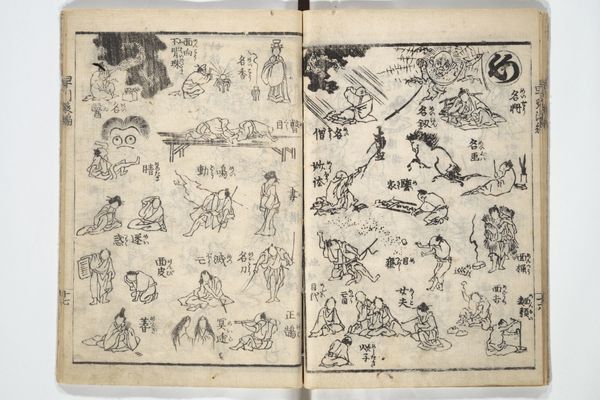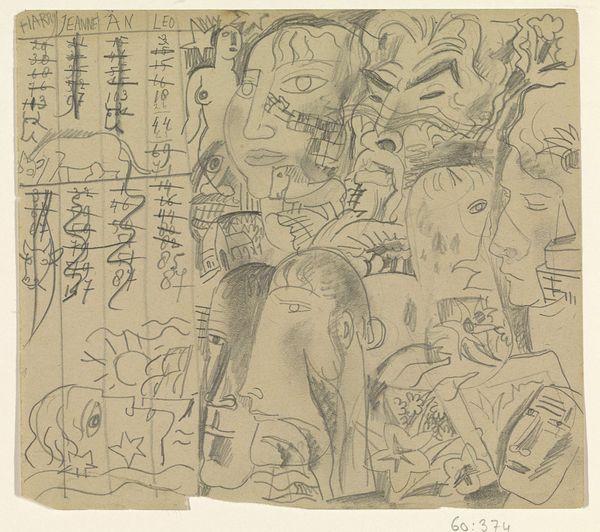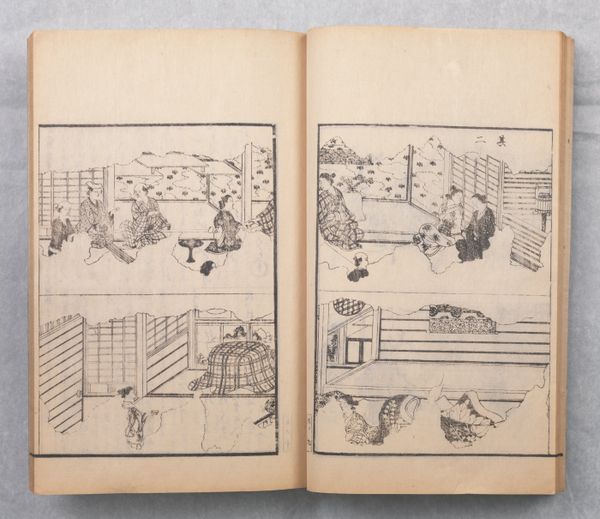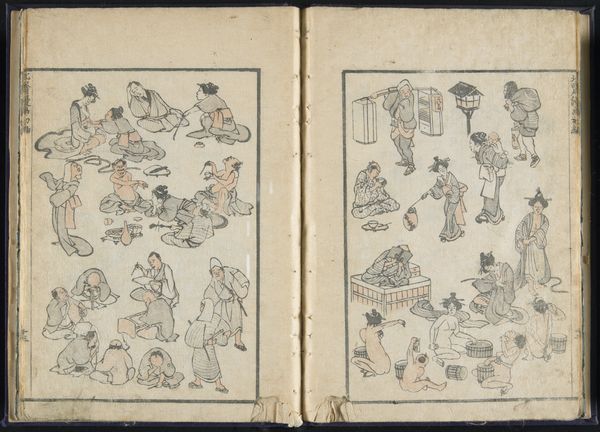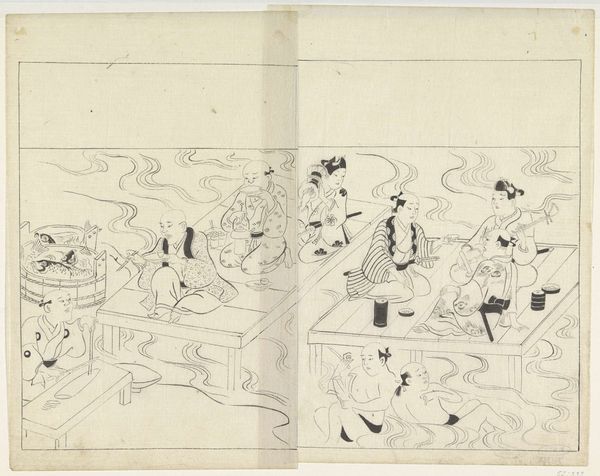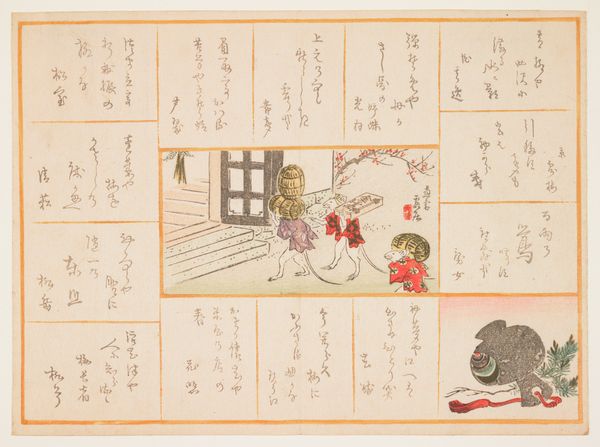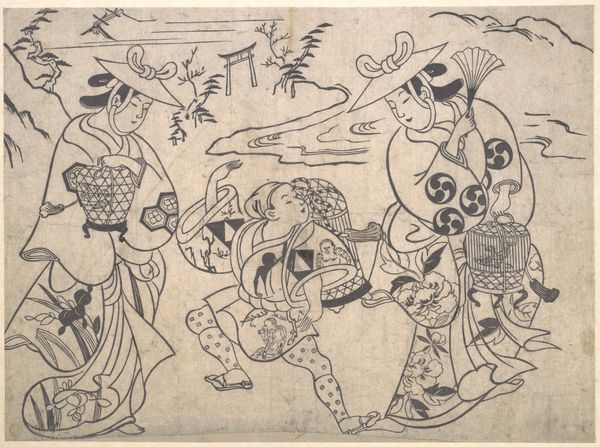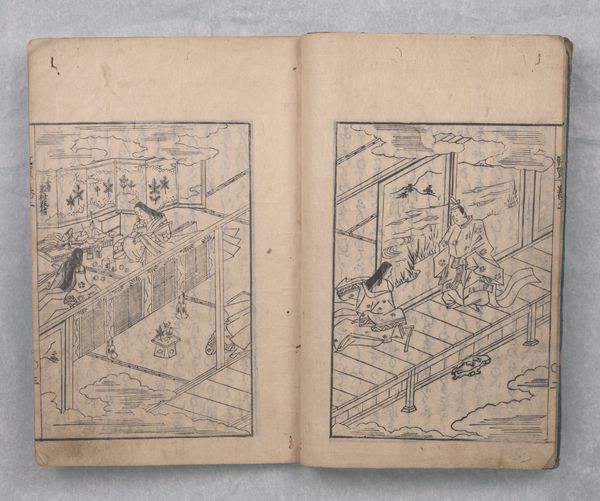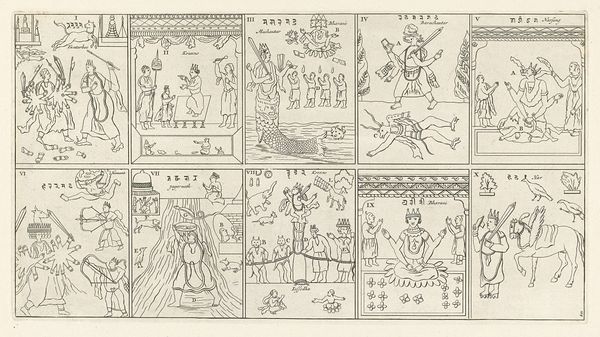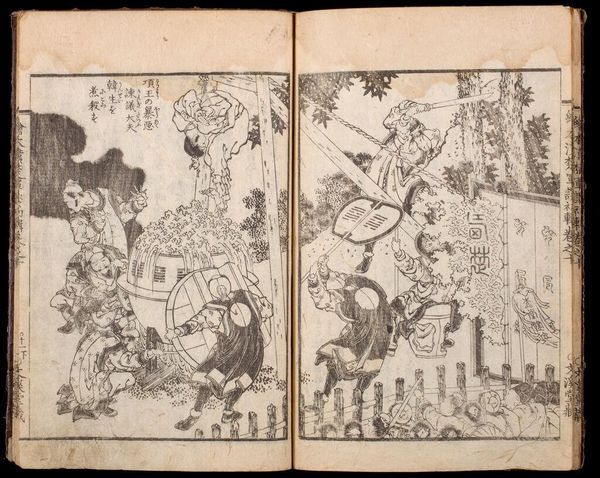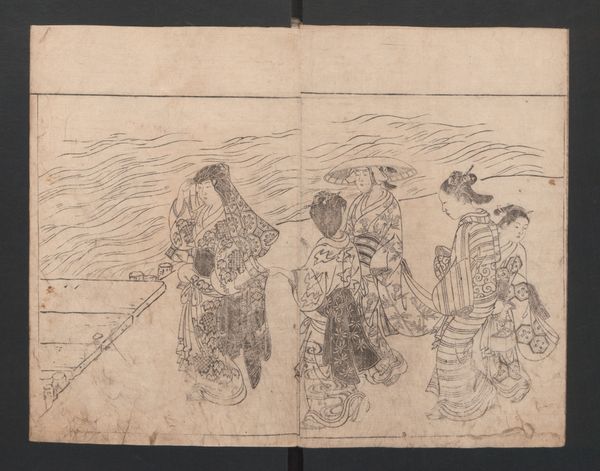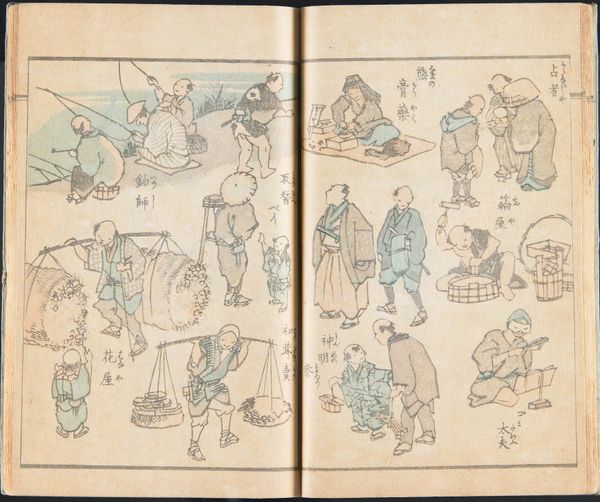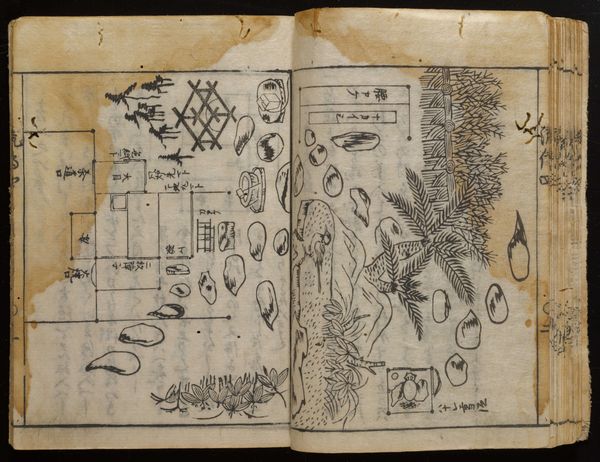
Dimensions: 8 7/8 x 5 7/8 in. (22.5 x 14.9 cm)
Copyright: Public Domain
Curator: Kawanabe Kyōsai created this work, titled Illustrated Diary, in 1888. It's currently held at the Metropolitan Museum of Art. Editor: What strikes me immediately is how crowded and lively it is! It looks almost like a comic book page, with multiple scenes or vignettes crammed onto each side. Curator: Indeed, and it is ink on paper. The artist skillfully uses the fluidity of ink to create thin linework and bring dynamism to each figure. Consider also that this was printed, likely a woodblock print which involves a considerable amount of labor and material skill to carve each block to make reproductions. Editor: The figures are compelling. There's a monkey, various men with exaggerated features. Their clothing, particularly the robes, hints at religious or perhaps scholarly status. There seems to be some satire. Curator: The ukiyo-e influence is evident. Kyōsai's style synthesized traditional Japanese painting with Western art influences, reflective of Japan during the Meiji period grappling with modernity. Editor: Are those specific figures then, cultural symbols? I’m particularly drawn to the prominence of the monkey; a creature that bridges folklore and real-world observation. Curator: Some certainly echo archetypes or stock characters from Japanese folktales. The rapid industrialization and societal shifts occurring at the time fueled interest in revisiting the past. These kinds of accessible images ensured the transmission of morals, satires and history. Editor: The way the artist crams all this activity into each panel contributes to a frenetic, almost manic energy, as if capturing the accelerated pace of change in Meiji-era Japan. What a poignant capture! Curator: The work also speaks to the everyday materiality of art production – the cheapness of the printing ensures a wider distribution of a narrative or a form of critique that higher end commissions would prevent. An object meant for use and dispersal, not only contemplation. Editor: Understanding those materials gives context to his commentary! Thanks to the density of detail, I’m sure one could pore over this for hours and still find new stories embedded within its lines. Curator: Absolutely. By paying attention to the ink, printing and paper, it really expands on the historical conditions, reminding us that art rarely springs from a vacuum.
Comments
No comments
Be the first to comment and join the conversation on the ultimate creative platform.
